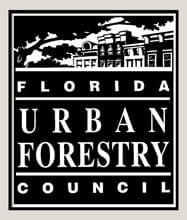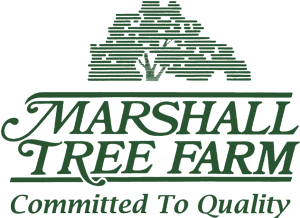Frequently Asked Questions
Production Questions
Research done in 1987 showed that root pruned live oaks had a 6-fold increase in the density of fine roots in the root ball. However, root pruning is only beneficial if done at the right time and in the right location so that roots have started regenerating and are inside the harvested root ball.
For more on this, read these articles:
“Root Pruning Broadleaf Trees Prior to Transplanting”
“Production Method and Irrigation Affect Root Morphology of Live Oak”
Circling or deformed roots are formed when a tree is grown for too long in a container. Research has shown that deformed roots can have a long term effect on the health and stability of the transplanted tree. Circling roots in the top portion of the root ball could, as the tree and root grow, eventually girdle the tree. Products designed to control root circling such as copper compounds and air-pruning containers have proven to reduce, but not eliminate, the problem of circling roots. Field-grown trees are grown without the use of a rigid container, therefore, the root system develops a more natural form.
For more on this, read these articles:
“Production Method and Irrigation Affect Root Morphology of Live Oak”
Recent research (1996) found that field-grown oaks and hollies have 80% of their entire root system weight when they are harvested. Research has shown that roots begin regenerating as soon as one week after being cut. Therefore, by the time it is shipped, a properly hardened off field-grown tree has already begun to replace any roots that were removed at harvesting.
For more on this, read these articles:
“Root Pruning Broadleaf Trees Prior to Transplanting”
Transplanting Questions
Trees should never be lifted by the trunks during transport or planting. Lifting by the trunk places the weight of the entire tree on the trunk. This sometimes leads to wounding or girdling of the trunk. Lifting by the trunk can also cause unseen damage to the tree’s cambium, signs of which may not be visible for some time after transplanting. Trees should always be carried or lifted by the root ball.
The wider the planting hole the greater an area of disturbed soil for new roots to grow into. It is especially important in compacted soils to dig out an area as wide as possible (3 times the width of the root ball) around the root ball. One of the most common errors in planting trees is planting too deep. It is very important that the tree be planted even with the ground level or slightly higher. In sites with a high water table or compacted soil it is safer to plant the tree slightly above grade and then raise the soil level around the tree by bringing loose soil up to the edge of the root ball.
According to the best information available, it is not necessary to incorporate amendments such as gels, polymers, mycorrhizae fungi, or other powders into the backfill when planting a tree. The best backfill in most situations is loosened original soil from the planting hole.
Anchor staking should be done only when necessary and in most instances should be removed within a year after transplanting. Trees with root balls which are light in weight often need to be staked to ensure they are anchored in the soil and will not blow over on a windy day. Field-grown trees rarely need staking due to their deep and heavy root balls, which securely anchor them in the ground.
Establishment Questions
Trees should receive 1.5 to 3.0 gallons (depending on time of year) of water per inch of trunk diameter per day. For example, a three inch caliper tree planted in summer should receive 9 gallons per day. Container-grown trees require more water than field-grown trees during establishment due to the porous nature of the container growing media. Watering should continue at least until the tree is completely established.
For more on this, read these articles:
“Irrigation Volume & Frequency & Tree Size Affect Establishment Rate”
The tree establishment time for most trees in central Florida is 3 months per inch of trunk diameter. For example, if a 3 inch caliper tree were planted it would require 9 months until it was completely established. Establishment means that the tree has rooted into the new landscape and started growing at the same rate it was growing prior to transplanting.
For more on this, read these articles:
“Diurnal Water Stress During Landscape Establishment of Slash Pine Differs Among Three Production Methods”
Research has shown that under optimum as well as limited water conditions hardened-off field-grown trees establish quicker than container-grown trees.
For more on this, read these articles:
“Irrigation Volume & Frequency & Tree Size Affect Establishment Rate”
“Diurnal Water Stress During Landscape Establishment of Slash Pine Differs Among Three Production Methods”
“Production method afftects tree establishment in the landscape”
“Try selling predug materials”
Still Have a Question?
SEARCH OUR SITE
NEWS
QUICK LINKS
PROUD TO BE AFFILIATED






